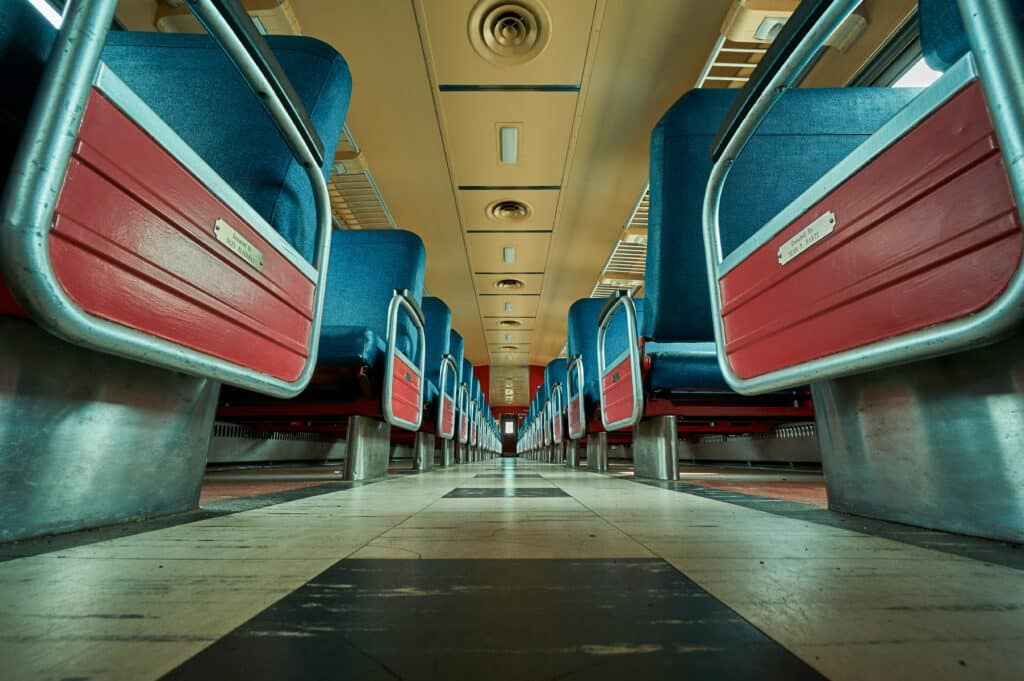Boosting the Share of Intermodal Transport: A Roadmap for reaching the European Green Deal Objectives
In this opinion piece Irmtraut Tonndorf, Communications & Marketing Director at Hupac Ltd., argues that the European Green Deal sets the stage for numerous regulatory reviews, which in turn, present important opportunities for strengthening and enhancing combined transport within Europe.
This article by Irmtraut Tonndorf, Communications & Marketing Director at Hupac Ltd., originally appeared in the European Transport Regulation Observer ‘Greening European Cargo Operations’ (September, 2021).
Can we double rail freight until 2050, as requested by the EU Green Deal? From an intermodal operator’s perspective, we can easily meet and even exceed this target. Intermodal transport has grown by 50% in the decade from 2009 to 2018. We can definitely go for more and offer a much more substantial contribution to decarbonisation. This requires, however, coordinated action between different stakeholders on the European and national level from policymakers to infrastructure managers, railway undertakings and intermodal operators.
Enabling regulatory framework
Combined transport bundles the advantages of road and rail, but for historical reasons linked to the enormous growth of the automotive sector since the second world war, rail is currently suffering from significant structural deficits. In order to ensure a fair level playing field between rail and road, the following measures need to be implemented.
- Reduction of differences in internalisation of external costs: Road freight causes about six times higher external costs than rail freight. So far, this discrepancy has not been adequately addressed. Therefore, policymakers should establish a regulatory framework that is based on the ‘polluter pays principle’.
- Reduction of Track Access Charges (TACs): While TACs were waived in 2020 due to the COVID-19 pandemic by some EU Member States for a certain period, their consistent waiver should be considered on a European level as long as the road tolling schemes are not up to par. Such a waiver would enforce conformity between the modes of transport (road and waterways are subject to tolls only in some European states) and ensure a positive impact on rail freight’s competitiveness.
- Revision of passenger priority rules: Passenger trains are prioritised over freight trains in all European countries – a circumstance that does not apply to road transport. This leads to shortfalls in efficiency, flexibility, quality and capacity. Therefore, it is necessary to revise the passenger priority rules on a European level to establish a homogenous regulatory framework where rail freight transport can grow in interaction with passenger transport.
- Reduction of access barriers to intermodal transport: While containers are perfectly intermodal and can be easily transferred from road to rail and vice versa, swap-bodies and mainly semi-trailers, the dominant loading unit type in continental traffic, require special equipment to be transferred on trains. With few technical arrangements, semi-trailers can be made craneable and therefore access standard intermodal transport without technical obstacles. Policymakers should make sure that craneability becomes standard for semi-trailers within a reasonable time. In the meantime, the retrofitting of today’s non-craneable semi-trailers should be subsidised.
- Establishment of an open data policy: We need to regulate the establishment of an open data policy involving infrastructure managers, railway undertakings, combined transport operators and logistics service providers. Relevant data must be collected by any participant in combined transport and shared to ensure transparency and collaboration. The regulation of an open data policy and the support of industry standards such as EDIGES contribute to achieving these gains.
Enhancing customer-driven physical infrastructure
No combined transport without adequate physical infrastructure! The specific requirements of freight transport need to be considered in all phases such as network planning, building and operations, with special attention to the predominantly international dimension of freight traffic. The following measures are crucial for higher productivity and quality of combined transport.
- Upgrade of existing infrastructure: For combined transport to grow above average, we need to foresee consistent investments into the physical infrastructure. In order to increase productivity and to achieve the desired modal shift, the European rail network needs to be upgraded to the P400 loading gauge – fit for the 4-meter height of semi-trailers – and a train length of 740 meters. In the meantime, a temporary compensation for the lost productivity due to the “underlength” of trains should be considered. In addition, bottlenecks need to be eliminated, additional high-quality capacity and redundancies are to be created, rail freight corridors must be interconnected for better network effects, and parking tracks need to be available in sufficient quantity.
- Supplement of terminal capacity: Decision-makers also need to invest in the terminal infrastructure to create access for freight to the rail network – a prerequisite for further combined transport growth.
- Standardisation of technical rules and specifications: Combined transport can grow supranationally if the networks are harmonised and national specificities are abolished. So far, locomotives and drivers often have to be exchanged at borders due to different standards and requirements in many countries. Hence, it is necessary to overcome these burdens by standardisation across Europe. The European Railway Agency needs to be strengthened, and the roll-out of the European Railway Train Management System for the entire rail network should be consistently implemented.
The innovation potential of politics
The future success of intermodal transport lies in the hands of today’s policymakers. The European Green Deal sets the stage for numerous regulatory reviews – a huge opportunity for strengthening and enhancing combined transport within Europe. The following legislative processes are crucial and require a coordinated effort – let us take the opportunity to lay the foundation for the growth we are striving for!
- Review of TEN-T Guidelines Regulation
- Review of Rail Freight Corridor Regulation
- Revision of the Energy Taxation Directive
- Revision of the Combined Transport Directive
- Revision of the Weights and Dimensions Directive
- EU road haulage rules in Combined Transport.






